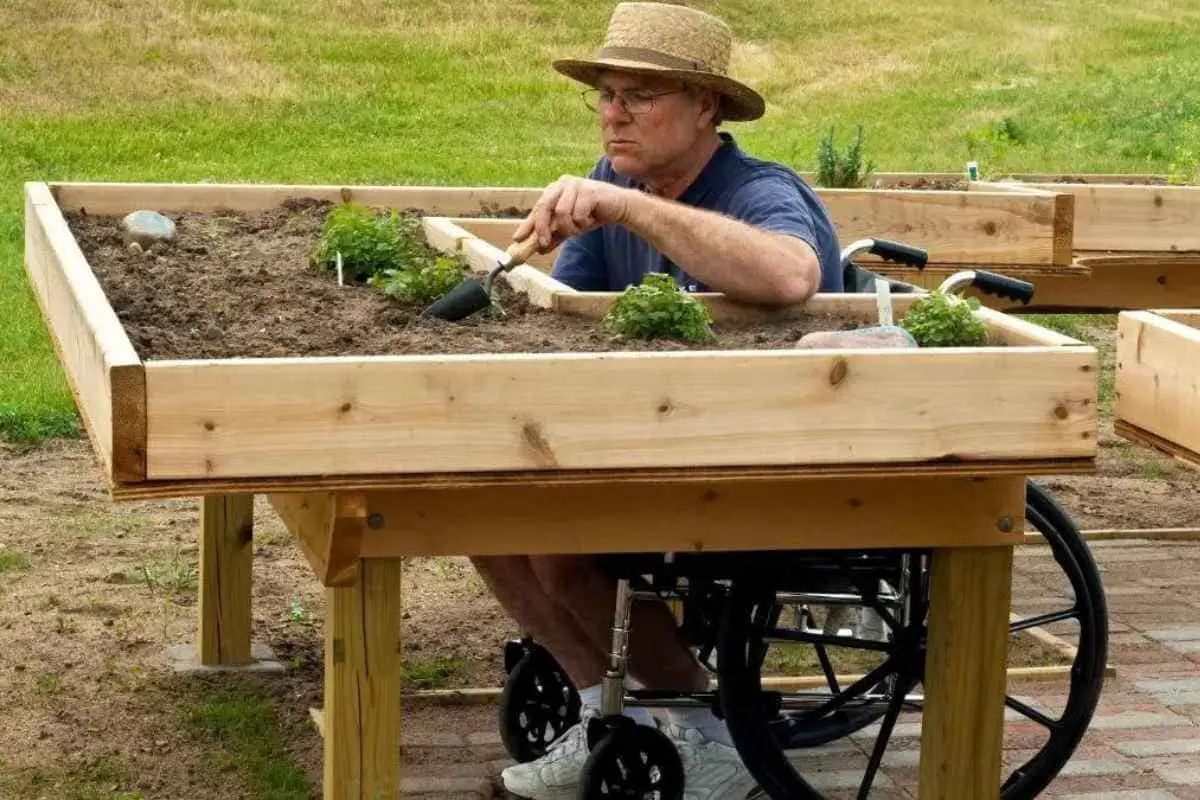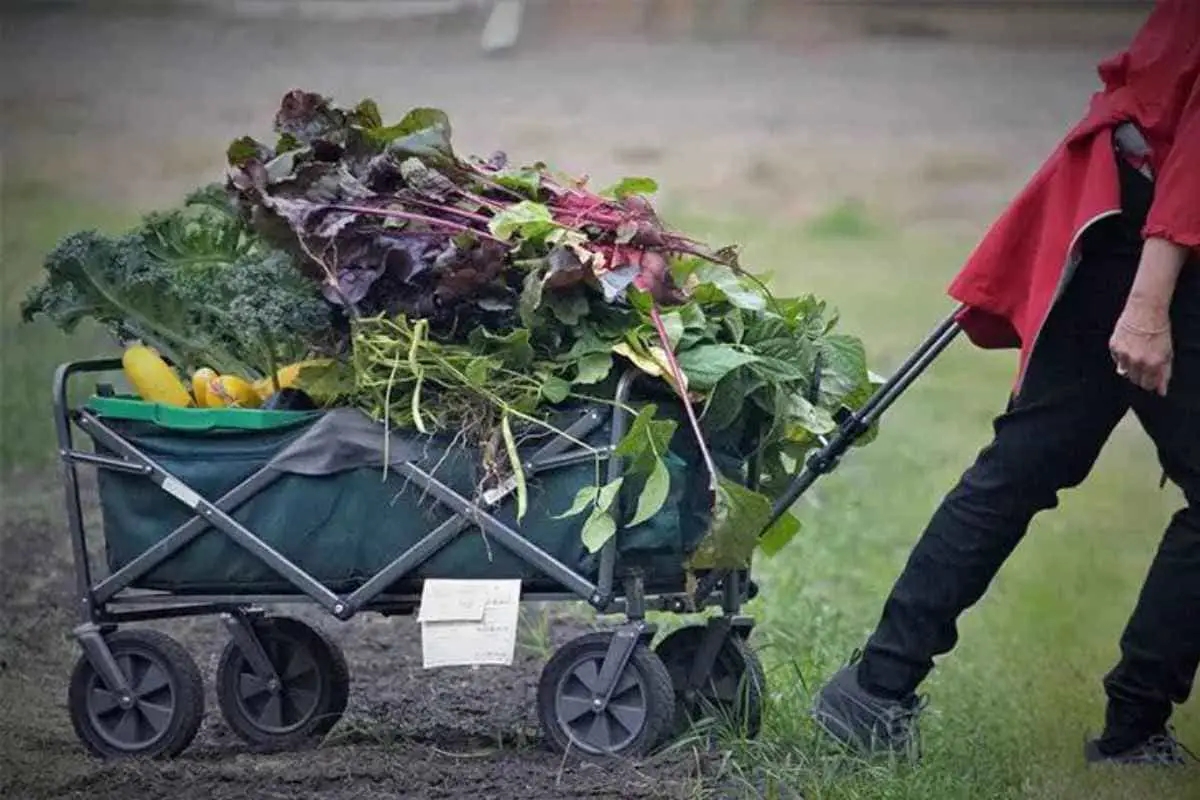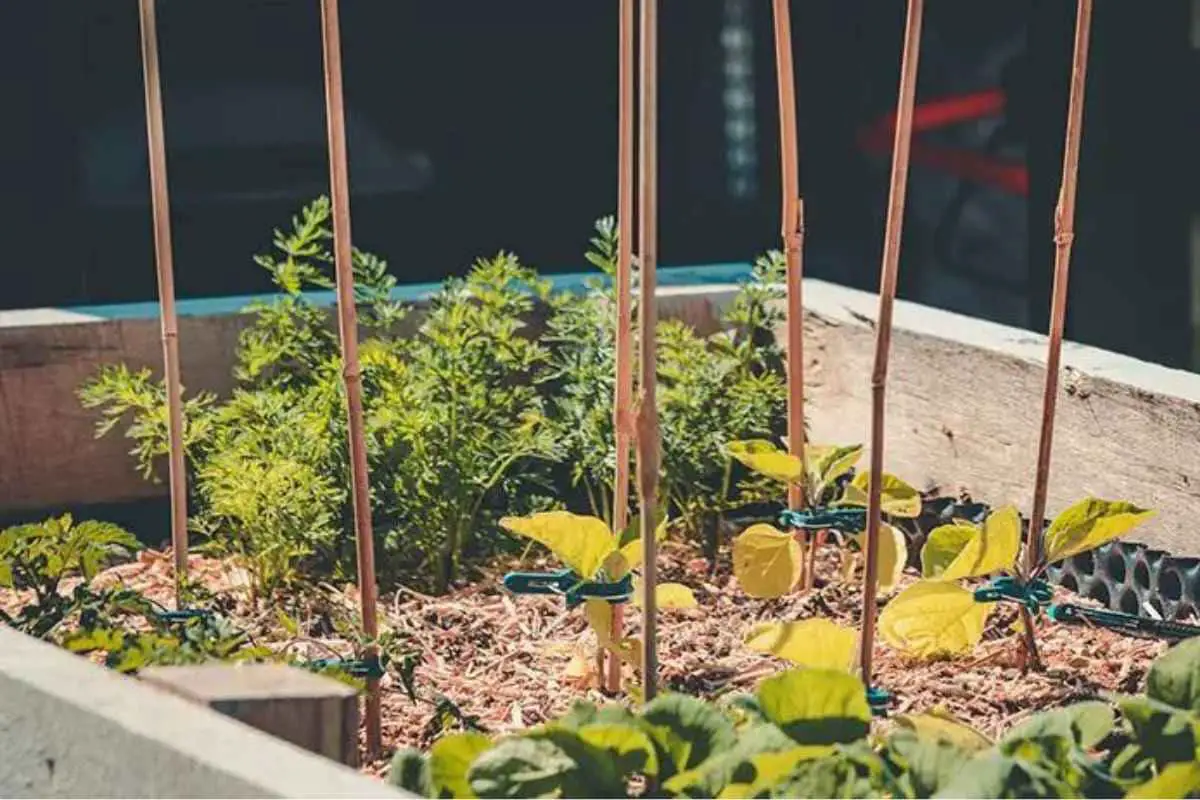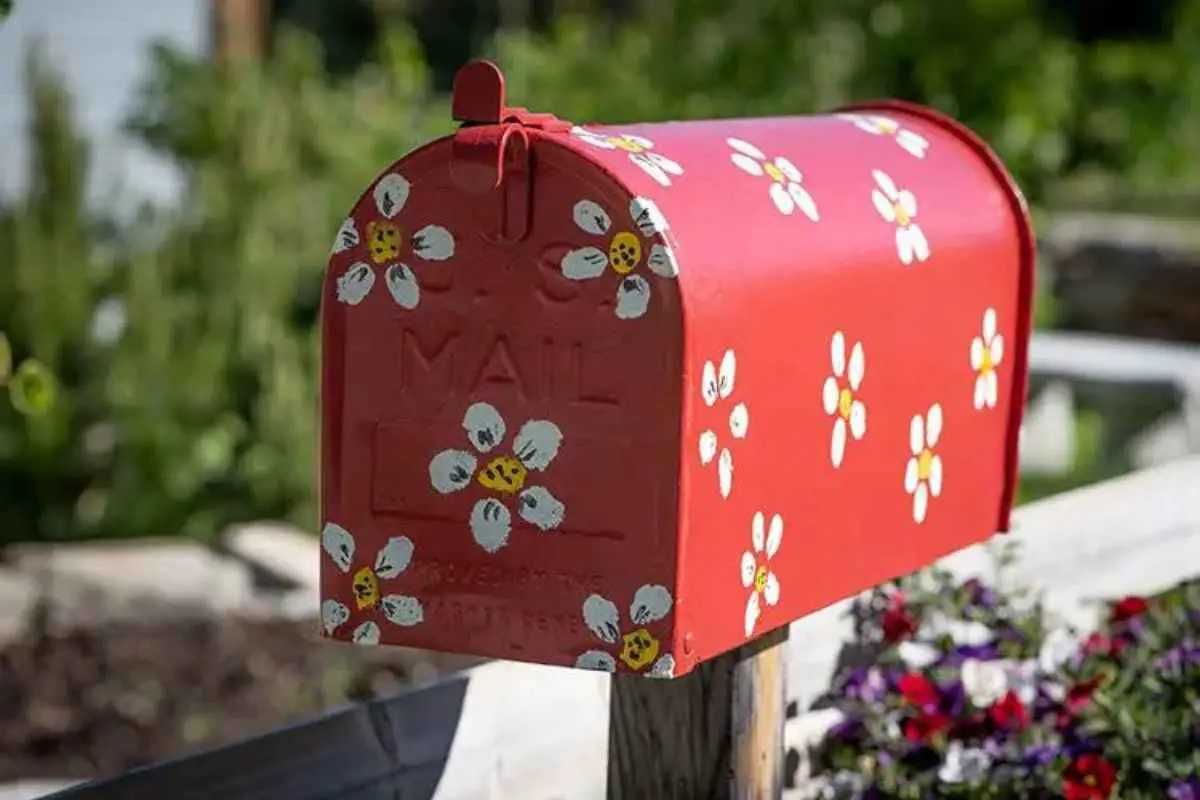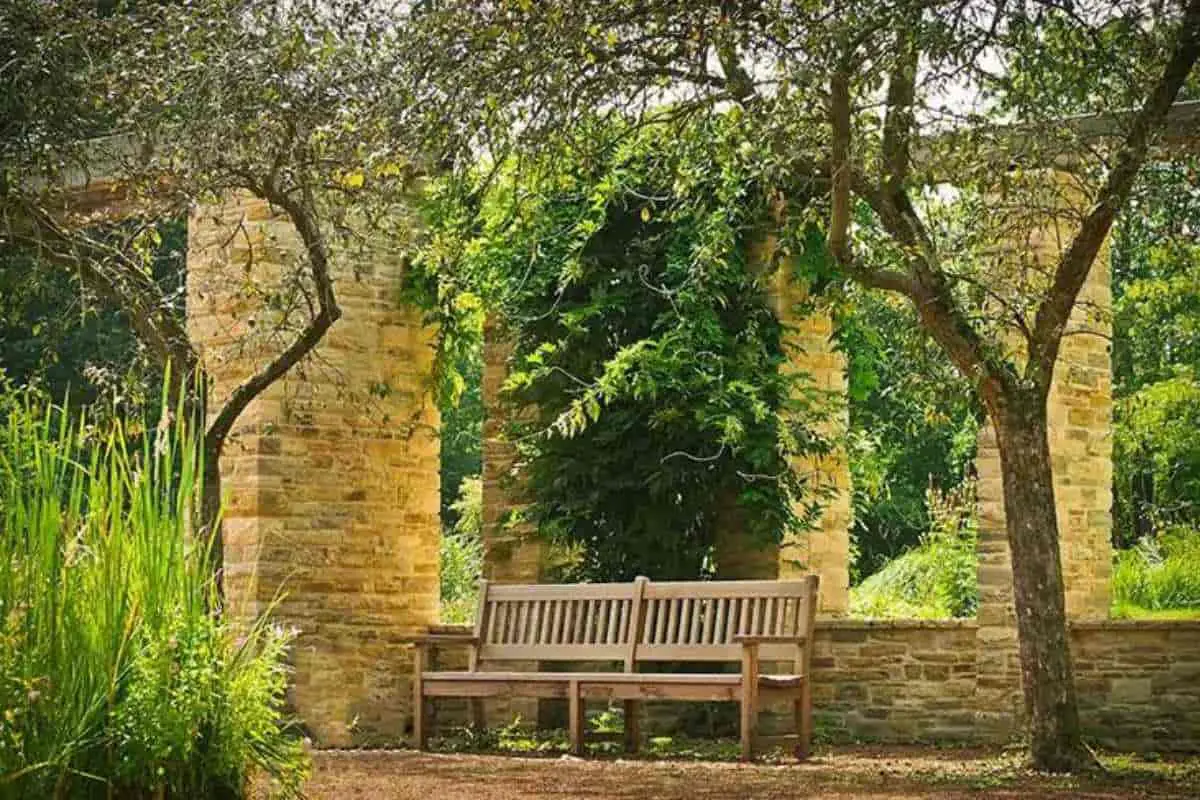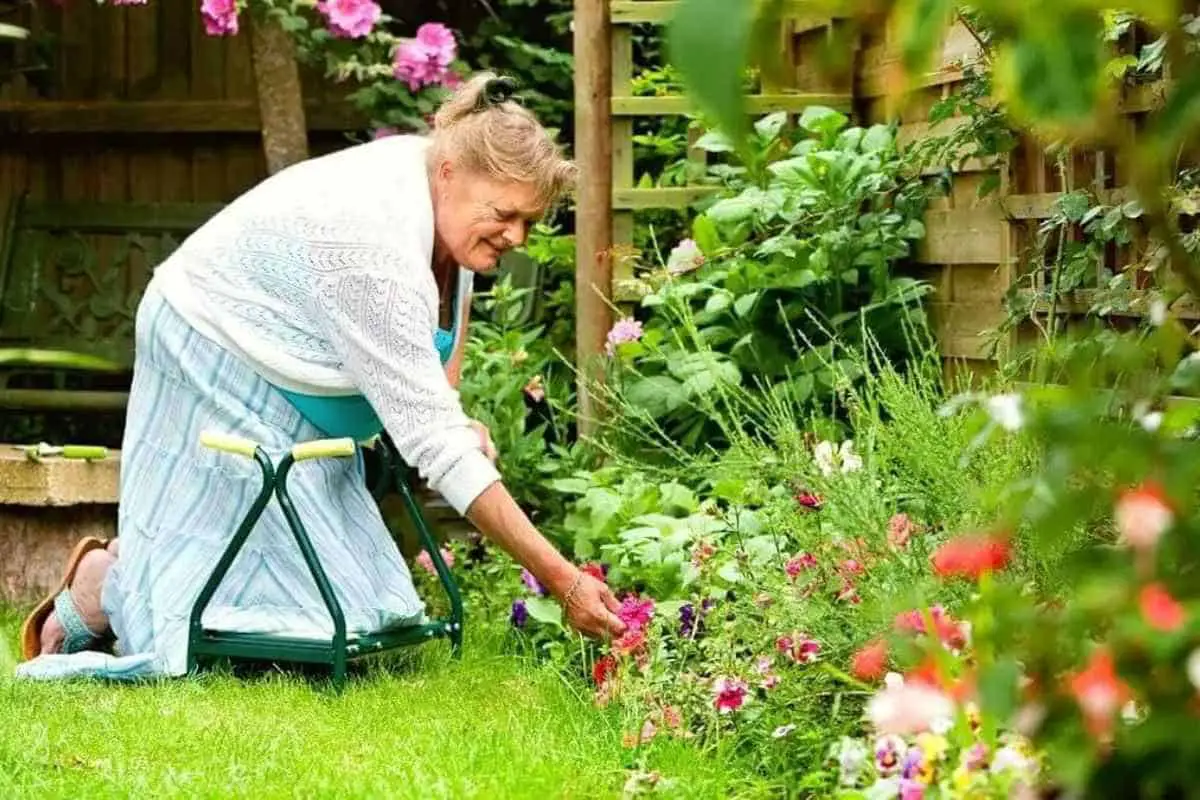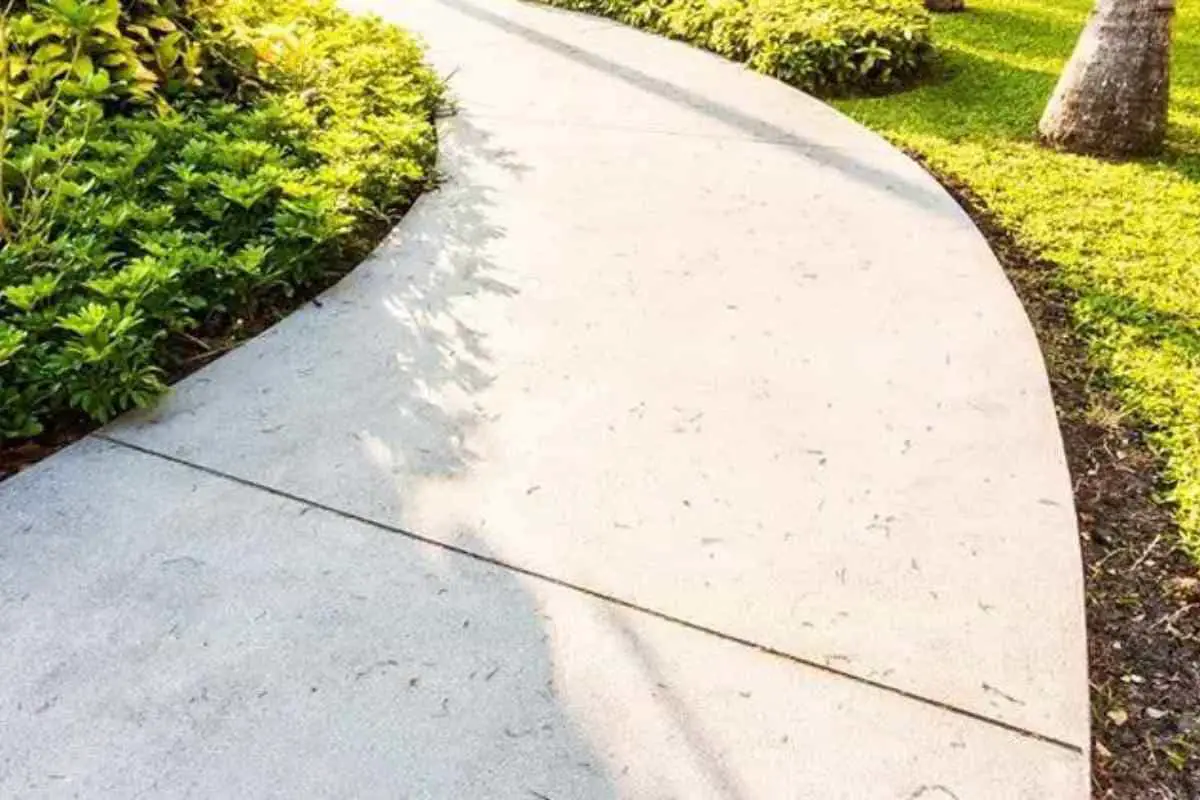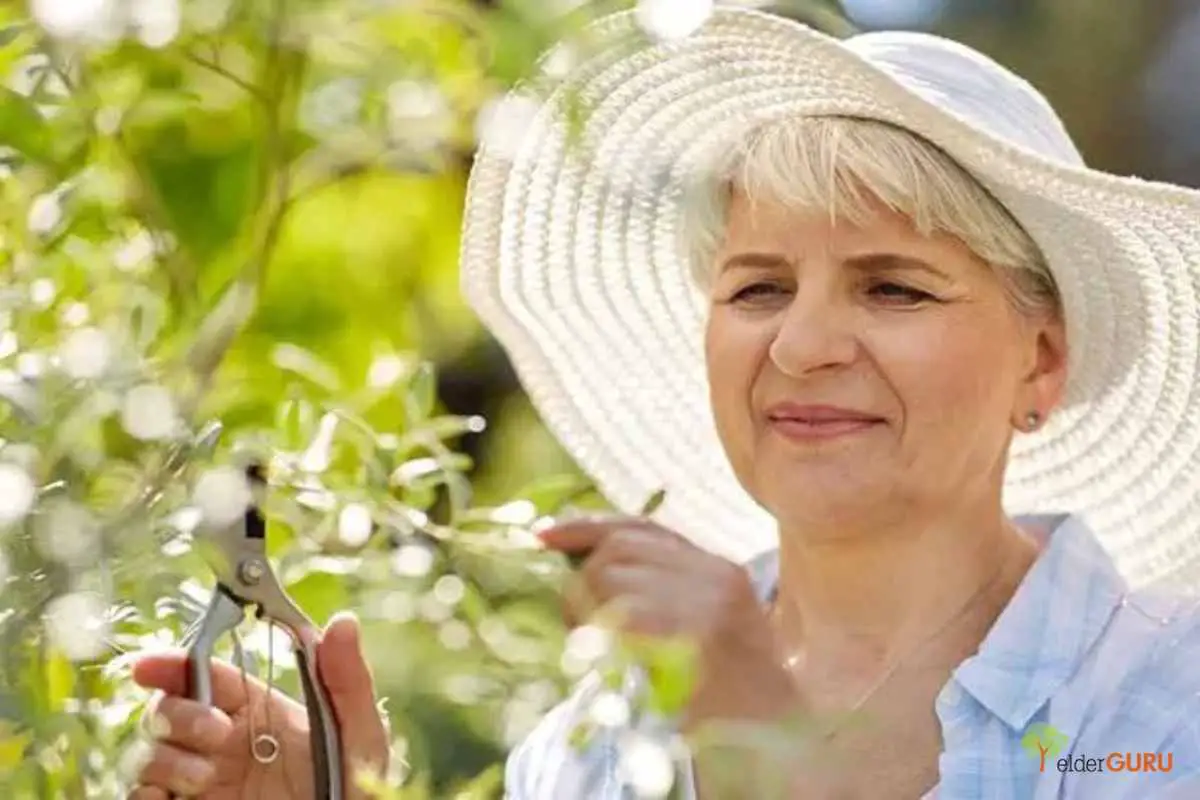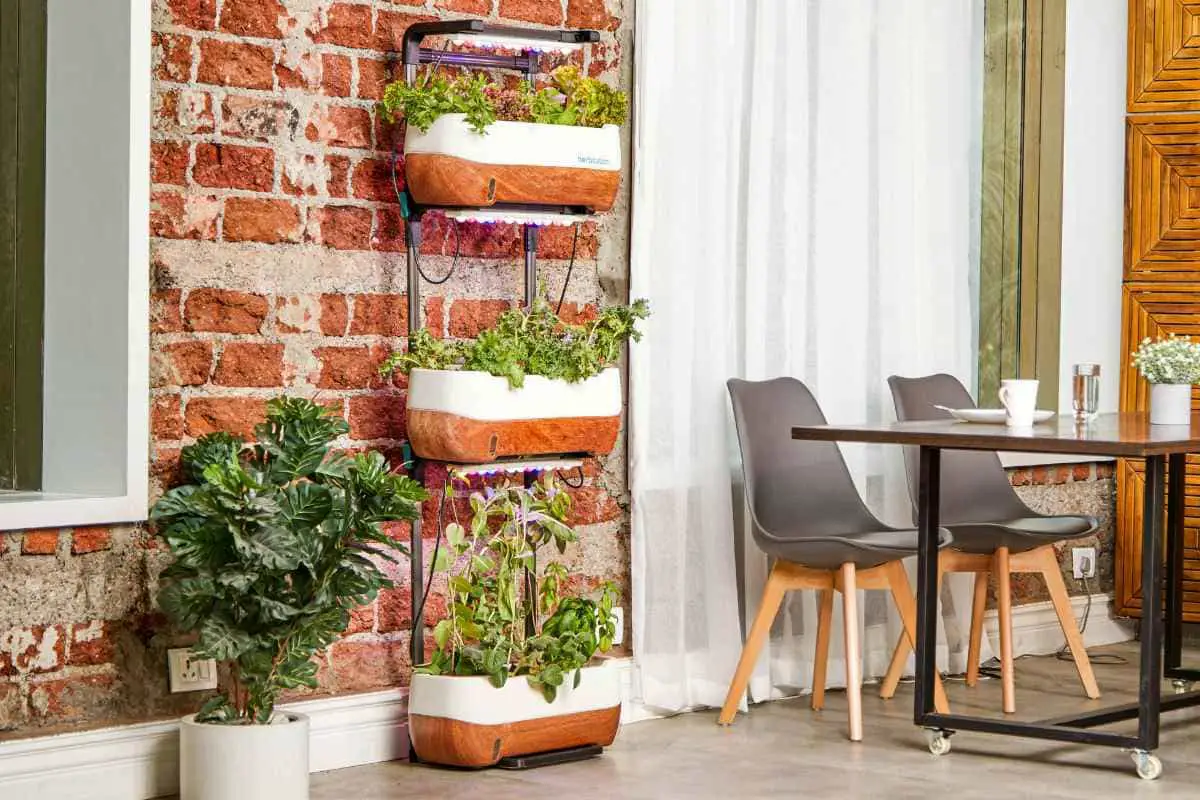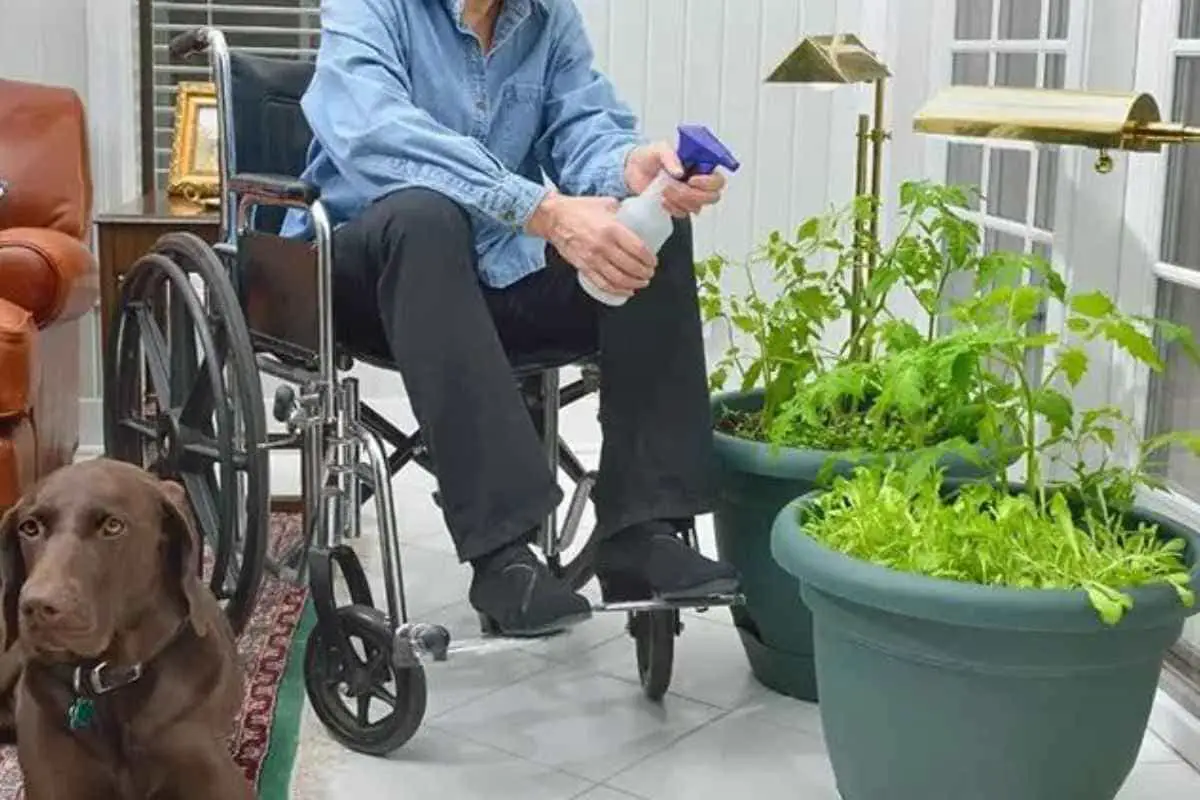As we gracefully age, the joy of tending to a garden doesn’t have to wane; in fact, it can become an even more cherished and therapeutic activity. Gardening offers not just the pleasure of nurturing plants but also provides a sense of purpose and connection to nature.
Additionally, gardening for seniors includes many health benefits. Beyond adding more homegrown, often organic foods to your diet, gardening includes Vitamin D exposure, mental stimulation, light exercise to moderately intense exercise, fresh air, a boost to the immune system, an opportunity to learn new skills, and general well-being associated with an active lifestyle.
For older adults who may face physical challenges, selecting the right tools can make all the difference in transforming their gardening experience.
In this article, we’ll explore ten essential tools designed to ease the process, ensuring that gardening remains a delightful and accessible pastime for seniors. From ergonomic designs to user-friendly features, these tools are crafted to make each gardening session a source of relaxation and fulfillment, along with a great way to alleviate stress.
The Importance of Good Health
By 2040 an estimated 26% of the US population is predicted to have arthritis of some form. For many though, they don’t have to wait till 2040 to experience such symptoms. They’re already experiencing them now!
As of 2018, 28% of men and 31.6% of women had experienced back pain within the prior three months of the study. Knee, hip, and wrist pain are also common in older populations.
So, what can you do to make gardening easier given these limitations? Are there gardening tips or tools to help us garden safely as we grow older? Of course!
Let’s take a look at our top ten suggestions.
1) Invest in a Garden Wagon
Gardening often requires moving fertilizer (one of our favorites being this one from Highlands Garden Supply), mulch, straw, dirt, and produce. Attempting to do this all by carrying everything yourself can quickly grow to be too much. Attempting to do such with a wheelbarrow forces the user to have to bear the brunt of much of the weight, lifting and pushing. Pulling the weight via a garden wagon is overall much easier on the body.
- CONVERTS INTO A FLATBED: Remove the foldable sides with quick-release hinges to create a flatbed, perfect for moving heavier objects
- HEAVY-DUTY: Sturdy, corrosion-resistant frame and tough, rubber wheels can go on various terrains like dirt and grass while comfortable handle lets you easily steer the cart
A garden wagon serves as a fantastic means to efficiently move heavy and large loads with minimal effort. Pulling a wagon to fill up with tomatoes, green beans, cucumbers, and watermelon is much easier than attempting to move all that with 5-gallon buckets.
As such, a garden wagon is a good investment for the gardener attempting to work around physical limitations who strives to make gardening more enjoyable.
2) Build Raised Beds
This is one of the first tactics that should be considered when it comes to creating a working garden for the individual with physical limitations. Raised beds better ensure that one doesn’t have to get so close to the ground – if even on the ground at all.
Built at the right height, they reduce the need to bend over, get on your knees, etc. Planting, weeding, watering, it’s all made easier with raised beds. There are plenty of design ideas as well, so you are limited only by your imagination.
- GROW A GORGEOUS HERB GARDEN | Elevated Outdoor Planter Offers Beautiful, Practical Design for Growing Your Favorite Herbs, Veggies, Fruits, Flowers & Other Vegetation Above Ground | A Stunning Accompaniment to Any Small Space!
- 100% RED CEDAR | Reap a Bountiful Crop Season After Season! | High-Grade Cedar Wood Resists Weather-Related Damage, Won’t Warp, Shrink or Swell in High Humidity & Features Unique Red Coloring
Perhaps one of the easiest ways build one is to plant your garden vegetables within straw bales. The best primer on how to do such that I’ve found is Joel Karsten’s Straw Bale Gardens. This type of garden involves zero construction, decomposes into compost that can be used for other garden projects, and allows one to grow all of their flowers and vegetables at waist to face level.
For someone who is struggling with back or knee pain, that’s hard to beat.
3) Put in a Garden Mailbox
Lugging garden tools from a shed or basement to the garden every day is just another heavy task that doesn’t necessarily need to be done. It causes you to have to make extra trips, spend extra energy, and can cause aggravation if you have joint injuries.
One of the best ways to eliminate this is to put in a garden mailbox. A simple metal mailbox installed on a treated 4×4 post within the bounds of your garden serves as a great place to keep handheld garden tools like trowels and weeders. These can also be extremely useful in community gardens when everyone is sharing resources.
- Material:Premium grade magnetic pvc
- Features:Reusable,waterproof,fade-resistant,all-weather,durable
It’s convenient, keeps your tools dry, and makes it so that you don’t have to do as much work. They serve as a great place to drop love letters to your gardener spouse or gardening friends too!
4) Install Seating
A chair in a garden is a wonderful thing. It allows one to sit back and enjoy what they have created as they soak up some vitamin D and rest weary bones. For those with joint pain, this can serve as a great means of mitigation.
With ready access to a bench, one can work for ten minutes, spend a bit of time resting so that pain subsides, and then go back to work. This eliminates the need to trek all the way back to the house once an angry back begins to act up, and the end result may very well be more time spent gardening.
- Double-Seat Glider: The strong gliding mechanism ensures secure, smooth, cozy gliding. Spend leisure time in the open air, sitting with a friend or family member.
- Great for All Sorts of Places: Our weather-resistant patio glider bench is great for the garden, porch, or front yard. Wherever it's placed, it provides superior comfort.
Bonus – a garden bench can also be part of the gardens overall visual appeal.
5) Buy a Garden Kneeler Seat
This is easily one of the greatest products available for the gardener with joint pain. It gives one the ability to sit as they prune, and if one is working closer to the ground, it serves as a fantastic knee-saver as well.
Should you end up needing help getting up from a kneeling position, the garden kneeler seat has handles that allow you to push against something sturdy as you bring yourself back up to a standing position.
- Comfortable Kneeling Support: Designed with soft EVA foam padding, this garden stool with kneeler cushions and protects your knees while gardening, reducing strain and enhancing comfort for long tasks
- Dual Function Design: Easily flip this gardening stool to switch between a sturdy seat and kneeling pad, making it suitable for planting, pruning, or taking a break during yard work
This can also serve as a great resource to have available if you end up falling in the garden and have a difficult time getting back up onto your feet. Check out our previously posted article full of great garden seat options perfectly suited for the older adult gardener.
6) Consider a Mobile Seat
If your garden is designed with long rows, you may want to consider investing in a mobile seat. Essentially a chair on wheels, this allows you to have ready access to a chair as you work your way down a long line of tomatoes.
- VERSATILE USAGE: Make this multipurpose mobile cart a go-to for a variety of home projects; perfect for carrying out tasks in your garden or yard, as well as painting and more!
- HEIGHT-ADJUSTABLE SWIVEL DESIGN: Designed with an adjustable swivel seat that prevents the need to crouch down or bend over while gardening, so you get relief for that aching back or knees
Not only does this help to eliminate unnecessary and repeated stooping, but it’ll keep you from having to get down on the ground yet again to reach the blackberries on the lower canes. While this may not work in smaller gardens, this could easily be considered essential for larger plots.
7) Buy a Scuffle Hoe
The best type of weeding is that which doesn’t require you to get down on your hands and knees. I’ve found scuffle hoes to work great for such. They allow one to easily and neatly tear up weeds while standing in an upright position and without risk of damaging nearby garden plants as well.
- V-Blade cuts through weeds better than the competition
- Open design works in soil, gravel, bark and other loose material
While the flat-bladed designs most certainly work great, for one struggling with physical limitations, a pointed design may prove to be more efficient and easier on the joints. For this, I recommend the Skidger Xtreme Scuffle. It’s pointed tip means it will easily stick into the ground, making for an easier time of tearing up weeds.
8) Make Wider Pathways
A wider pathway may not be a garden tool per se, but it can be an important aspect of gardening for seniors.
Loss of balance is generally associated with the aging process, and as a result, one should make their garden as easy to walk in as possible. If walking through your garden is something akin to being the tightrope walker at a Barnum and Bailey’s event, then your garden is not friendly towards the aging gardener.
If the garden you’re building is for somebody with a wheelchair, you’re going to want to make the pathways at least three feet wide. If not, you can get by with less space for a pathway, but you still want to ensure that you have adequate room to move, turn around, and to safely walk beside baskets full of eggplant.
9) The Gardener’s Friend Pruners
To the best of my knowledge, these are one of the easiest to use set of pruners out there. If you struggle with arthritis in your hands, causing a lack of grip strength, you know that using a traditional pair of pruners can be virtually impossible.
- GARDENING ESSENTIAL: Steel blade plant shears ideal for a variety of pruning tasks like cutting flower stems; gardening shears with bypass action are Ideal for cutting delicate stems as the bypass action is less likely to cause damage to the stems
- MAXIMUM POWER AND PRECISION: Fiskars pruning shears with low-friction blade coating makes smooth cuts, reduces gumming, and enhances rust resistance; the hand pruners with steel blades stay sharp through heavy use and provide excellent durability
That’s where these guys come in. They give you a mechanical advantage for the same movement, making pruning your rose bushes that much easier. I highly recommend them for anybody who is struggling with arthritis.
10) Use Ergonomic Tools
Easy to grip and use garden tools are essential for the gardener with joint pain. You have to be able to dig, weed, plant seeds, and till if you’re going to use a garden, so why not have the tools that make doing so as pain-free and enjoyable as possible?
- Award-winning ergonomic garden trowel with unique, patented blade for optimal performance in all soil conditions
- Ultra-lightweight, die-cast aluminum blade is stronger than steel and will never rust
Two tools that may help you in doing so include ergonomic trowels, such as the design that Radius Garden offers, and the Bear Paws Cultivator Claw. They make their designated tasks easier, meaning that you’re much more likely to engage in those tasks.
- SHARP - Great for breaking up soil, weeding and removing unwanted debris in your flower beds or vegetable garden
- DURABLE - Traditional metal hand tools are replaced with our tough and ultra strong nylon. For a durable gardening tool, you cant beat the Cultivator Claw garden tool
The end result?
A well-cared for and organized garden.
Another Option: An Indoor Garden
Embracing the therapeutic embrace of an indoor garden, rather than outdoor, can prove to be a transformative and health-enhancing endeavor, especially for older adults. Beyond the aesthetic appeal of lush greenery, indoor gardening offers a range of physical, mental, and emotional benefits that can bring satisfaction year round, as an indoor garden isn’t dependent in the way an outdoor garden often is.
The act of caring for plants can provide some light exercise while also improving dexterity and motor skills, contributing to enhanced mobility. Moreover, the presence of indoor plants has been linked to improved air quality, offering respiratory benefits that are particularly valuable for older individuals.
Beyond the physical advantages, cultivating an indoor garden can also combat feelings of isolation, providing a daily connection to nature and a source of relaxation.
Gardening for Seniors Final Thoughts
Embracing the joys of gardening as you age is not only possible but made even more delightful with the right tools. The ten carefully curated tools discussed in this article are not just instruments for cultivating a garden; they are gateways to a world of wellness, fulfillment, and connection to nature. By prioritizing ergonomics, ease of use, and accessibility, these tools empower older adults to continue indulging in the therapeutic benefits of gardening.
As we witness the aging process, it’s crucial to recognize that with the appropriate tools, gardening becomes a sustainable and enriching activity, contributing to overall physical, mental, and emotional well-being.
What are your thoughts on our list of helpful items to have at the ready as you dive into your gardening hobby? Are there other tips or tools you recommend that we didn’t cover here?
Let us know in the comments below!
About the Authors
Zac Martin is an exercise physiologist who has spent years helping older clients work through various physical and health conditions. He is familiar with the physical issues older adults face as they age and enjoys working on and writing about strength training, successful recovery techniques, and healthy aging.
Leona Small is a freelance writer and former caregiver. She has experience working with people with Alzheimer’s Disease and related dementias and has spent years working alongside both patients and caregivers in Hospice. Additionally, she’s worked as a Professional Organizer helping people and families to purge, organize, manage, and prepare for various life transitions such as moving, downsizing, and the passing of loved ones. Her passions include writing about healthy aging, innovative resources to help older adults and caregivers, and traveling.
References:
https://www.cdc.gov/arthritis/data_statistics/arthritis-related-stats.htm
https://www.cdc.gov/mmwr/volumes/68/wr/mm685152a5.htm

